First, the basic knowledge
Divided into shallow hole step blasting and deep hole step blasting. Open-air shallow hole blasting refers to the step blasting operation where the diameter of the blasthole does not exceed 50 mm and the depth of the blasthole does not exceed 5 m. Bench blasting with a blasthole diameter greater than 50 mm and a hole depth greater than 5 m is collectively referred to as deep hole step blasting.
Deep-hole blasting is sought when conditions permit. Metal mines, mostly of step height 12m; the step height coal mine is 10 15m ~; rock step height is 15 ~ 20m.
Second, the design of open-air step blasting scheme
(1) Basic contents of blasting design for open-air steps
1. Main contents of open-air shallow hole blasting design
Determination of the hole pattern; determination of the consumption of unit explosives; determination of the diameter of the blasthole; determination of the depth and depth of the blasthole; determination of the resistance line of the chassis; determination of the row spacing between the blastholes.
2. Main contents of open-hole deep hole blasting design
Determination of the hole pattern; determination of the step width; determination of the consumption of unit explosives; determination of the diameter of the blasthole; determination of the depth of the blasthole and ultra-deep; determination of the resistance line of the chassis; determination of the row spacing between the blastholes; Determine; determine the length of the plug; determine the charge per well.
3. Main drawings of open-air step blasting
The main drawings of the step blasting design include: the projection view of the step, the plan of the surrounding area of ​​the explosion area, the detonation network diagram, and the safety warning range map.
(2) The concept of minimum resistance line and chassis resistance line
The minimum resistance line is the minimum distance from the center of the grain to the slope of the step. The chassis resistance line refers to the distance from the center of the medicine column to the step slope on the level of the step platform.
The chassis resistance line is generally used as the basis for the design of the blasting parameters, which is an important parameter in open-air blasting.

(3) Charge structure of open-pit blasting
1. Continuous charging structure: It is convenient for mechanized charging, but the distribution of explosives along the step height is uneven;
2. Spaced charge structure: It can enhance the blasting and crushing effect, but the construction operation is troublesome, and it is not convenient to mechanize the charge. The application in large rock mines is limited;
3. Mixed charge structure: It is beneficial to improve the blasting block degree and reduce the blasting cost. However, its operation is also cumbersome and hinders mechanized charging;
4, the bottom air cushion charge structure: more convenient and mechanized charge.
Third, the basic requirements of open-pit blasting work
Three aspects of blasting quality, blasting safety and economic benefits of blasting.
1. In terms of improving the quality of blasting, the crushing block should meet the engineering requirements, and the bulk rate is low; there is no root ridge; the blasting pile is concentrated and has a certain degree of looseness, which can meet the high efficiency shovel loading requirements of the shovel equipment.
2. In reducing the harmful effects of blasting, it should prevent the damage of blasting earthquake, shock wave, flying stone and noise, ensure safe blasting; reduce backlash, back crack and side crack to reduce the impact on slope stability.
3. In terms of improving the economic efficiency index of blasting technology, efforts should be made to improve the amount of blasting and blasting, reduce the unit consumption of explosives, and give full play to the mechanical efficiency, so that the overall cost is the lowest.
Fluorescence spectrum can provide excitation spectrum, emission spectrum, fluorescence intensity, quantum yield, fluorescence lifetime, fluorescence polarization and other more physical parameters. These parameters reflect various features of the molecules , and through which can obtain more information of the tested molecular. CNI launched fluorescence Spectrometer with the characteristics of rapid analysis and accurate measurement, is usually used in crystal, rare earth elements and other fluorescence spectrum detection. Fluorescence spectrum analysis and measurement is special in high sensitivity, strong selectivity, micro samples, simple operation, etc.
â– Composition of Fluorescence Spectrometer
A variety of linewidth options at :
257, 360, 405, 473, 514.5, 532, 633, 660,
785, 830, 980, 1064 nm
High sensitivity;
Up to 80% quantum efficiency;
Spectral range 200- 1100nm
Excitation wavelength;
360, 405, 532, 785, 830 nm...

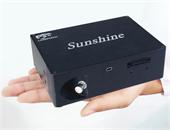
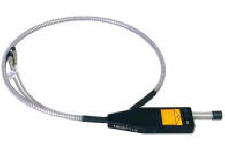
Laser Source
Fiber Optic Spectrometer
Probe
â– Fluorescence Spectrometer Solution
Fast connection, flexuble operation.
Wavelength is optional according on
Customer`s acyual requirements.
Simple measurement and easy operation,
extemal power supply vehicle- mounted charger,
Dustproof, anti- vibration, arti-glare interference...
Build- in narrow line width laser- power
adjustable, high sensitivity spectrometer-
used for weak signal detection
It combines micro system and Raman
system which greatly tacilitates the Raman
micro area detection

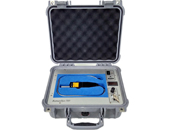
Combined Fluorescence Spectrum System
Portable Fluroescence Spectrometer
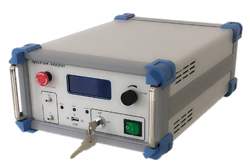
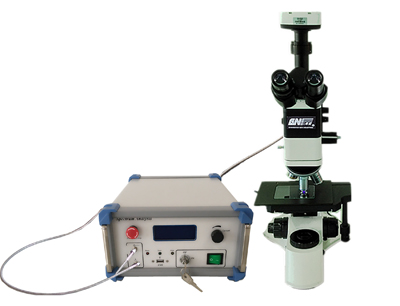
Desktop Raman Flurocence Spectrometer
Micro Flurocence Spectrum Measurement System
â– Sample Fluorescence Spectrum

Combined Fluorescence Analyzer,Atomic Fluorescence Spectrometer,Fluorescence Spectrometer,X Ray Fluorescence Spectrometer
Changchun New Industries Optoelectronics Technology Co., Ltd. , https://www.cnioptics.com